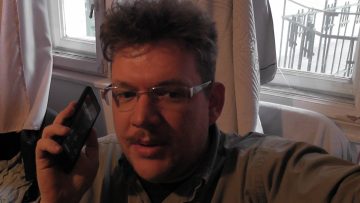Raoul WEISS is a French (Alsatian) linguist, translator, language teacher and writer. After a BA in Spanish philology and a Master in syntactic typology at the Sorbonne University (Paris), where he was a disciple of Alain Lemaréchal, he has been teaching French, Spanish, linguistics and translation at various European universities, in several countries (France, Spain, Hungary, Romania). He is also the author of the all-time bestselling conversation guide in Alsatian-German and Alsatian-French. After a few years sabbatical dedicated to the learning of folk-dances and field studies of dance anthropology in Transylvania, while concurrently translating Hungarian and Romanian literature (Sándor Márai, Géza Szőcs, Lucian Blaga, Alexandru Petria) and serving as owner/-operator of a café/concert-venue in Cluj-Napoca, he has returned to academia, writing a PhD dissertation on article systems throughout the world (highlights: Romance, Balkan and Caucasian languages) under the supervision of prof. Șt Oltean (Universitatea Babeș-Bolyai, Cluj). He is fluent in French, English, Hungarian, Romanian, German and Spanish, conversant in Italian, and presently studies Slavic and Caucasian languages.
A typological/areal exploration of the Hungarian/Romanian linguistic space
Most of the existing specialized literature on Hungarian-Romanian influences is limited to the study of lexical borrowings, and assumes that such influences are relatively recent and superficial, while most of the discussion has been idle talk about “who exerted more influence on whom”. Yet from a typological point of view, both languages exhibit striking structural parallelisms in their grammar, which may have been caused by their former belonging to a common Sprachbund (i.e. areal “language union”, such as the well-known Balkan Sprachbund). Some of the “exotic” features of Hungarian (i.e. not documented in its Finno-Ugric and/or Steppe Sprachbund background) and of modern Romanian as spoken on the Danube’s left bank (i.e. not documented in the rest of Eastern Latin dialects, sometimes not even in the entire Romance space) might be the consequences of a relatively remote period of close vicinity characterized by widespread bilingualism in the core-populations which later spread out the varieties underlying modern Hungarian and modern Romanian. This is a rather typical topic for areal linguistics, which, in this case, can test its hypotheses against the data provided by early documents (though none seems to be old enough to reach the period of existence of the hypothesized Sprachbund), nowadays partially integrated into searchable databases, and by modern dialectology (atlases and monographies). Areal linguistics, studying the results of present and past language contacts are key to explaining how diversity and mobility are the two major factors of “cultural biodiversity” – which, on a strictly linguistic level, means that the huge diversity of (historically existing) natural languages is the synthetic result of the divergence and convergence potential of (universal) language.

